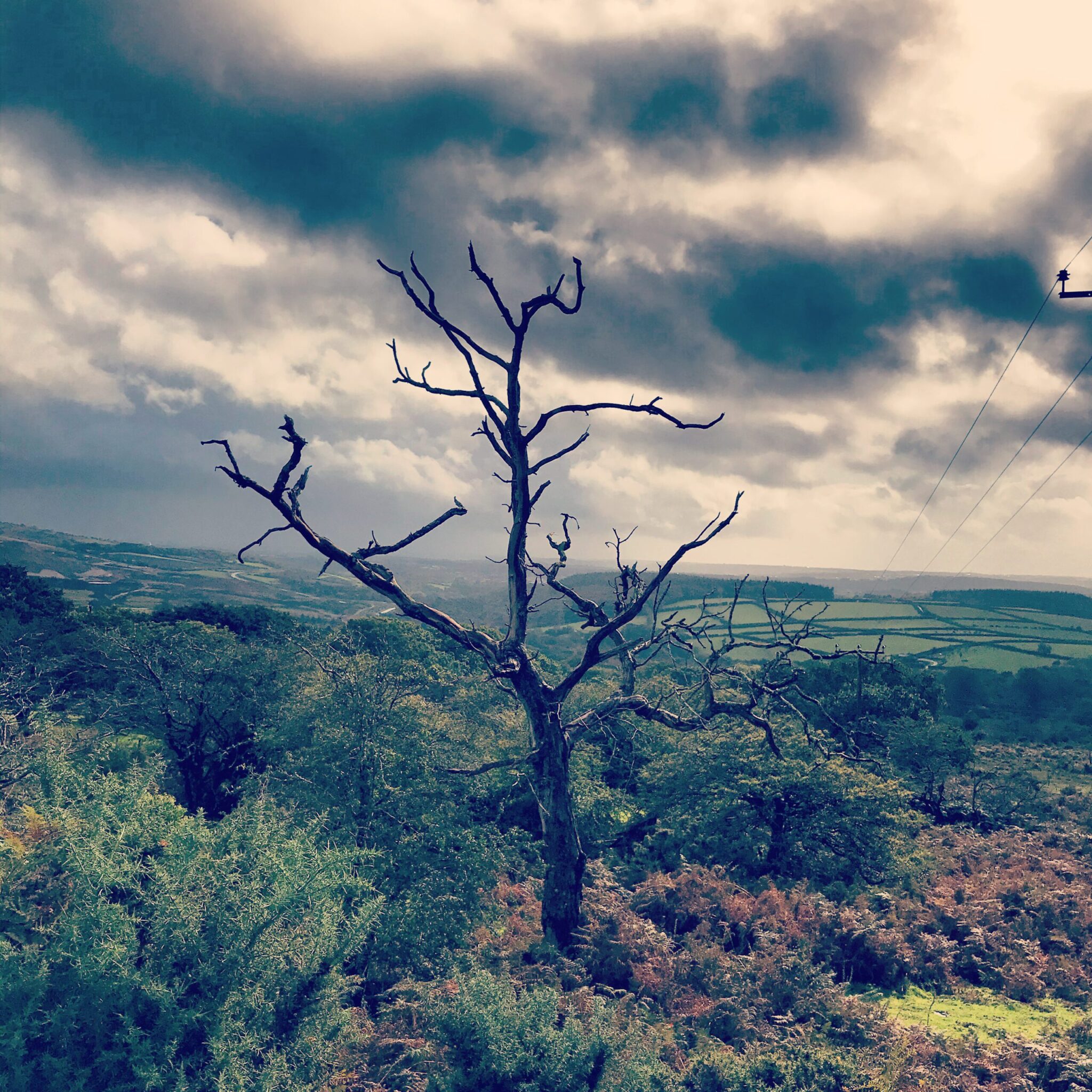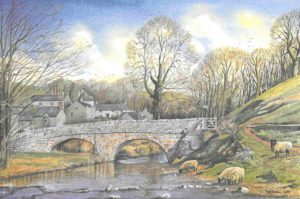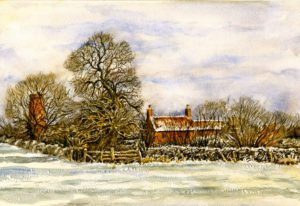Beheadings
Not many people of my generation in our small region forget their first beheading, and I am in this respect an archetype of my place and era. I was on the way to the cornershop to pay an overdue newspaper bill at the time and, seeing the crowd of people forty yards away in the marketplace and hearing their excited jeering and applause, I became curious and wandered over to find out what the commotion was. I was just too late to see the actual beheading, but the man beside me assured me it was good and clean, and soon we followed a procession up to the Castle Mound, and I was able to properly see the head as two of our leading councillors held it aloft in their dripping, gloved hands. Long shadows fell over the earthworks, including the long shadows of the councillor’s arms, and the head, which in this form looked monstrous. The head belonged to Frank Spurgeon, who had the previous week been photographed by The Big Town Camera in the process of stealing tyres. I had been aquainted with Frank when we were in school, but if I am honest I never trusted him. The beheading of Frank was back in the days when people still found a beheading exciting. Crowds of sometimes as many as 110 would gather to watch, at that time, but, as crimes continued to occur, and history progressed, people soon became densitized to the drama of beheadings. There were various schemes to make beheadings more dramatic – tying the severed head of the criminal to the back legs of a wild dog and permitting the dog to rampage loose throughout the streets for a couple of hours at its leisure, for example, and, a considerable time later, displaying as many as five heads on the back of a docile sheep – but the novelty always wore off. Soon, it was not uncommon to see groups of idly gossiping neighbours and shopkeepers not even glancing up from their quotidian conversations as a freshly severed head was transported past them to one of the three beacons above town via whatever elaborate method was in vogue that week. Ten years ago, beheadings were finally stopped – out of boredom, I suspect, as much as anything else. If we had disputes, or one us was perceived to have done a great wrong to another, we settled it amongst ourselves, and sometimes people still died, but for the most part things worked themselves out. This – along with improvements in medicine – can be counted as one of the main reasons behind our region’s population expansion during the last few years.
Climate
In our region we do not believe that the world is shrinking due to weather, in grave danger of heating up, drowning, or drying out. Rather, we choose to trust that weather goes through phases, bad and good, but always normalises, over time. In the distant past, for example, there have been Ice Ages, but these have passed, and been followed by Quite Warm Ages, with almost no ice at all. We believe that, right now, our region is in one of its harsher meteorological cycles, and many of our less robust houses have floated away, but we have faith this will soon be over, with a better time ushered on by our own good behaviour, as a community, and the totems we place in our fields, such as timber sun faces, deceased hedgehogs mounted on plinths, parasols and mannequins inspired by departed loved ones.
Dialect
With its hard “R”s, elongated “O”s, and its profusion of conjoined words and slang, our dialect can seem abstruse or even downright impenetrable to outsiders. Unusually, it is the towns in our region where accents tend to be earthiest and twangiest, and the surrounding countryside where they tend to be most mild and “RP”. Still, there are phrases used here in common use that people in surrounding regions have never heard of, owing, some believe, to the enclosed, hilly nature of our region. The one time I visited a neighbouring region, I expressed to a stranger I met in a public house that I was “bocked” but he only gave me the blankest of looks. This is one of the many very short phrases common to our region that are used to describe an extremely complex emotion or mood. In this instance: “I feel a bit like a small object would feel when a dog chews it it then spits it out into a puddle then a clumsy owl picks it up in its claws but loses its grip and drops it from a moderate height.”
Ornithology
All the birds in our region were gunned down during the previous century. We regret those more barbaric and uncaring times, and by way of repentance pay strong respects to the spirit memory of the region’s avian life, and it could be argued that this, when practiced diligently, is not much different to having the birds here themselves, right now. Many of us, even though we are too young to have ever known birds in person, can replicate birdsong using our own voice, and in the minutes leading up to closing time it is common to hear an aural rainbow of squawks, tweets and quacks emerging from our public houses. My ex-wife, Jane, was well-known for doing a particularly fine impression of a crow. One tipsy night early in our marriage I complimented her effusively on the impression, although I came to regret it slightly as the years went on, and the crow impression – while if anything gaining rather than lessening in quality – began to wear on my nerves through sheer repetition. I continued to applaud the impression on each of the eleven or twelve times a week I heard it, though, and sometimes even thank her for it, as I would never have willingly hurt her feelings.
Other Wildlife
While deficient in the area of birdlife, our region does boast a much larger number of hedgehogs than other regions, with approximately eleven hedgehogs to every human. Though far from being domesticated, there are signs that hedgehogs are becoming more companionable around the people who live in the houses near their hedges. Just the other day I came home and found my own local hedgehog asleep on my least steep footstool, a trail of his surprisingly large faeces leading back to the hole in the porch which I have been intending to fix for a year or so. I know it can be painful naming a hedgehog, then finding that the hedgehog was not as tied emotionally to you as you believed, so I will wait another while before naming this one.
Fashion
We tend to prefer simple fashions here: waistcoats, plain large-brimmed hats decorated with wildflowers, skirts and roomy trousers made from unwanted household material. Hair tends to go through ten year phases: for a decade, male hair is long and female hair is short, then for the following decade the opposite is true. The changeover is gradual, and for a six month period at the end of every decade male and female hair converges in length. (This is traditionally a period of cultural androgyny, and in the ensuing year more new plays exploring themes of cross-dressing and bicuriosity tend to appear in our region’s theatres.) In winter, tradition dictates that our pets wear jackets. Many of us eschew footwear in favour of thick socks, but are rarely seen in public barefoot. This can at least partly be put down to the abundance of hedgehogs, who are known to gather in groups on doorsteps and driveways around dawn: a time when those going out to get their morning milk or leaving early for work tend to be bleary-eyed and unalert.
The Young
As a temporary measure of population control, it is now illegal to have children inside the borders of our region: a rule which has been in force since a couple of years after beheadings became illegal, and is punishable by a fine of £100. This rule has not affected me personally, as it is a long time since I have been romantically active, and I decided early in life not to pass on my bloodline. Where is the border between giving a child a damagingly sheltered upbringing and turning it into a neurotic mess, cognizant of the true nature of the world, who fears its own fingernails? I believe I am not one of the ones put here to try to find out. But I can see that joy, as well as terror, is part of the experience of sending on your genes out into the future beyond you, and I have noticed that a little less carefree laughter rings out from our region’s gardens these last few summers.
Folklore
Our region boasts a rich oral storytelling tradition, and there are far more tales and parables – lessons and cautionary episodes passed down in our alehouses, greenhouses and barns over the centuries in narrative form, with a little alteration in the telling each time – than I can possibly detail here. But no summary of our region and its legends can pass without a mention of Jennifer, our best-known supernatural phenomenon. First possible recorded mention of Jennifer is in the translated 9th Century poem, Our Hill Of Woe, by Anonymous, within the lines, “And down valley bottom/Where the broth of the ground/squelches and steams/And lives she that is soft-faced but walks quick/And knows the sin of each/Better than men know it thyself.” The points that are generally agreed about Jennifer are that she has no surname, an extra – though redundant – leg and her face largely consists of wool, but that aside it is hard to describe her, as everyone who sees her witnesses her differently, based on their own personal fears. I was very scared of buttons and curtainless windows as a child so when Jennifer came to me, it was as a wooly, many-toggled face, pressed to my bedroom window, on a succession of ghastly January nights. I had totally forgotten this happened until it returned to me as a repressed memory during a series of counselling sessions in my middle years, when I gradually unpicked my youth until it resembled nothing that it once had, in my memory. I am still ambivalent about whether these sessions were the wisest course of action.
Hunting
All forms of hunting are now banned in our region. The last type of hunting to be banned was sheep coursing: a pursuit of the upper classes and their lower born apprentices, decried by hunt saboteurs as “impossibly cruel” and “preposterously easy”, which has not been practised in our region for nigh on a quarter of a century. Thanks to the lack of hunting, nature and man are perceived to be in a more harmonious state than ever before here, with some species previously thought to be on the verge of extinction slowly beginning to return to our region. It is hoped that this will soon include birdlife. Recently, two pigeons were spotted fornicating on the chimney pot of a small filling station less than a hundred miles away by a diplomat from our region who had stopped to purchase fuel and travel sweets.
Religion
Conventional religion being less widely practiced than it once was, most of the churches in our region have now become shops, community centres and filling stations. A notable exception is St Isaac’s, on Pudding Hill: the celebrated “church within a church within a church”. Only half a sheila-na-gig and the cracked and jagged porch now remain of the original, 1100 year-old flint St Isaac’s, which was covered over four hundred years later with the harsher second St Isaac’s, and although our region’s war with our two closest neighbouring regions five centuries after that was only enough to do minimal damage to this edifice, it was still thought sufficient grounds to build a third, even bigger St Isaac’s around it, although the bells for the second Isaac’s were salvaged and upcycled, and still ring out today, on very important regional anniversaries. Personally, I avoid St Isaac’s, owing to it being the scene of a traumatic episode from my adolescence, when, tenderly carrying my favourite local hedgehog, Ellen, I was chased through the transept, with tears on my face and only thick socks on my feet, by three mean boys from my Business Studies class who had taken to calling me “Hedgehog Bastard” after they cottoned on to Ellen’s adorable yet tricky habit of accompanying me on my morning walk to school. I doubt such victimisation would still happen, even in some of our region’s more backward secondary schools, now that the companionship of hedgehogs has become such a regular part of life.
Ancient Monuments
In the east of our region, you will see remnants of Bonejack’s Wall, half-built six hundred years ago to keep our region totally enclosed and plague-free, until shortages in our quarries caused the project to be abandoned. Regrettably, all our chalk hill figures – cockerels and sheep, largely, of dramatically varying physiques, but all with huge penises – were rubbed out and grassed over during the previous century, and survive now only as crude drawings. Possibly our most famous ancient monument is The Black Well, which sits deep and dark in its ominous spot at the end of Narrow Valley, behind William’s Ditch, beyond the Big Town Camera. Though not reachable by conventional automobile, the well attracts over a thousand visitors every year. It is said if you look into the water and see your reflection staring back at you, you will live a long life, of over 70 years, although this lore has been queried by numerous people already over 70 who have looked into the well and not seen their reflection staring back. My friend Malcolm from Book Group said he once went up to The Black Well during a waxing gibbous moon, gazed into the water and saw Jennifer staring back at him, but he is known for being very imaginative.
Tourism
Our region is closed to tourists for 49 weeks of every year but, on the remaining three, outsiders flood in, in their dozens, and we could not welcome them more. Most choose to ramble along the thin piece of land called The Strip, which leads to our region’s sole 1600 yard stretch of coastline, with its whiter than white sandy beaches, brace of small but fully functioning lighthouses and large and charismatic population of puffins. Others prefer to ramble freely in the hills, appreciating the unique quality of the silence found up there and the beauty of observing sheep roaming where they please, unowned, with the freedom to be sheep and nothing more. With such a short holiday season, our region doesn’t boast hotels as such but many of us – including myself, until recently, when I downscaled to a studio apartment – open our houses to visitors as temporary bed and breakfast establishments, and serve locally famous foods, such as pumpkin tea and prickpudding. Our guests make appreciative noises and, when asked if they might visit our region again, reply that it is definitely not out of the question. Soon, they will be gone, and life will resume, our economy once again thriving from its annual boost, the ale houses rowdy with local dialect and the undersong of crow, wren and goose. From my window, I listen to the tick of the old clock in my living room and watch the slow progression of the outsiders’ cars and caravans along the trunk road that leads to the border, until the last distant speck of them is gone, and these hills are once again empty.
Illustrations by my dad, Mick. You can follow his Instagram page here, or visit his shop here.
This is my latest book.
This is my previous book.
This is the one before that.
This is the one I’m funding at the moment, which you can pre-order if you’d like to. (The closing date to get your name in the back as a supporter is April 20th.)
If you’d like to help me out and keep me writing on this website, you can take out a monthly subscription via the homepage.




Nit picked: Second sentence under Tourism should begin “Many choose to forage….”.
It actually should have said “Many choose to forge a path” but I changed it.
Great stuff, Tom. Very dark and very funny. Pleased that hedgehogs are doing so well!
Thanks jo!
I was taken aback by this post Tom, in a good way. I can’t properly say why, but it gave me the creeps. I did find parts of it funny, but there was this underlying feeling that the narrator may have something awful happen to him soon because this world is more than a bit sinister.
Quite often I find a new post on your site, make tea and settle down to enjoy a bite sized literary treat before I have to go off and do something very ordinary. Today’s read made me forget the tea.
Thanks Angela. I guess it did the job it was intended to, then!
Welcome back to Devon. Hope you feel at home again and that Ralph experiences the same rejuvenation in his old age that The Bear did.
Good stuff, man. Please feel free to pursue an increasing detachment from reality.
Not sure how I missed this excerpt til today, but after reading it I can imagine you might find it both unsettling and fortuitous to have been working on this before and during an actual pandemic…. I’ve already begun making mental pictures in my mind of the world from the story, though, so it will be hard to wait for the rest of it!